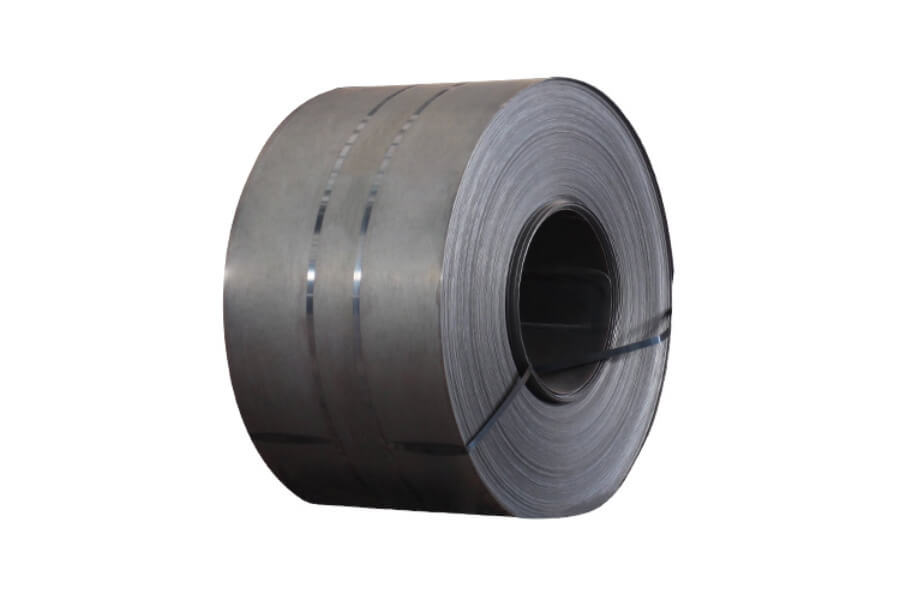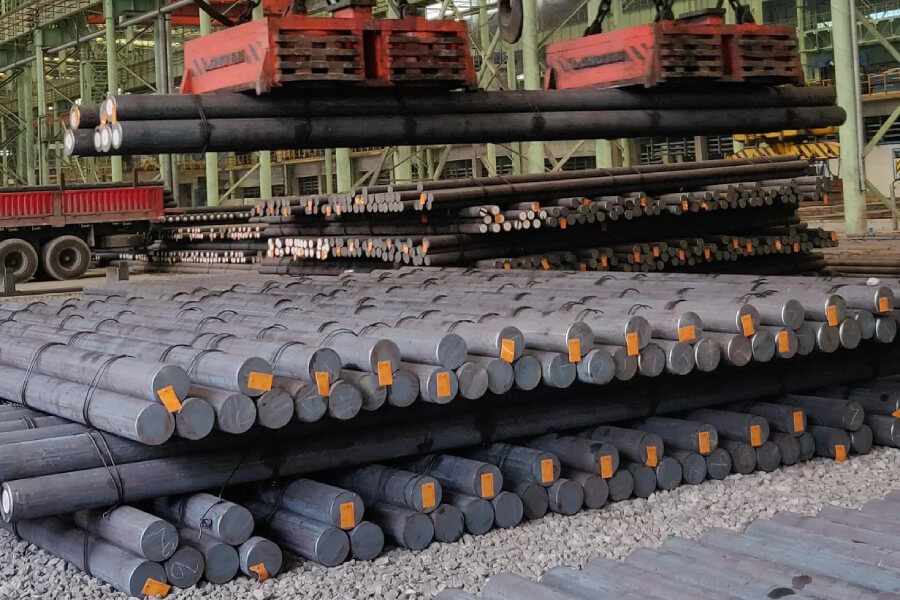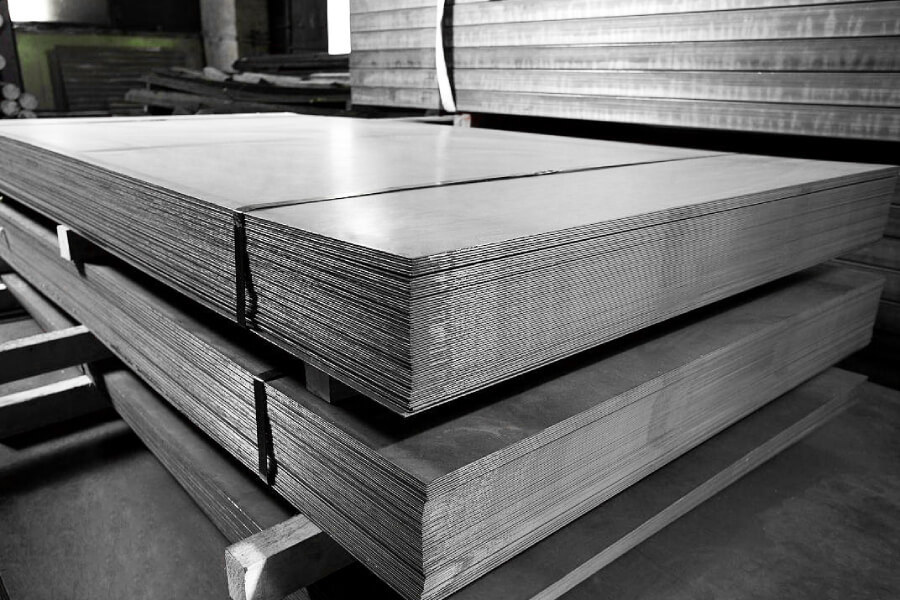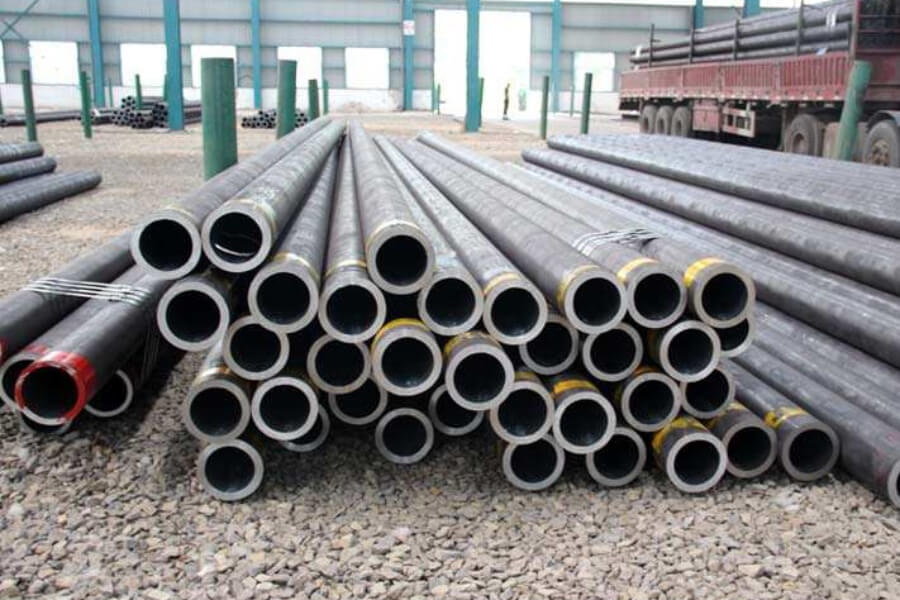4 Types of Carbon Steel: Features, Advantages, and Applications
Jan 07,2025
Carbon steel is one of the most widely used materials in construction, manufacturing, and various industrial applications. This metal alloy, primarily made up of iron and carbon, is classified based on its amount of carbon. The carbon content affects the material's strength, hardness, ductility, and overall performance.
Understanding the different types of carbon steel is crucial for selecting the right material for specific applications. In this post, we will dive into the four main types of carbon steel—low, medium, high, and ultra-high—and explore their features, advantages, and ideal applications.
1. Low Carbon Steel (Mild Steel)
Features
Low-carbon steel, often mild steel, typically contains carbon content ranging from 0.05% to 0.25%. This is the most common type of carbon steel used across many industries. The low carbon content makes the steel highly ductile, which means it can be easily bent, shaped, and welded. The material is also relatively soft, which makes it less prone to cracking or breaking under stress.

Advantages
Ease of Fabrication: Low-carbon steel is easy to machine, form, and weld. Its ductility makes it an excellent choice for applications requiring significant deformation without failure.
Cost-Effectiveness: Because of its relatively simple production process and lower carbon content, low-carbon steel is typically less expensive than higher-carbon steel.
Good Toughness: While not as strong as higher-carbon steels, low-carbon steel exhibits excellent toughness, meaning it can absorb a significant amount of energy without breaking, even at lower temperatures.
Applications
Low-carbon steel is used in a vast array of applications where flexibility, ease of fabrication, and affordability are key. Common applications include:
Automotive Components: Such as car bodies, panels, and exhaust systems.
Construction: Steel beams, structural components, and reinforcement bars.
Pipes and Tubing: For the oil and gas industry, as well as water and sewage systems.
Metal Furniture: Including desks, chairs, and shelving.
2. Medium Carbon Steel
Features
Medium carbon steel contains between 0.25% and 0.60% carbon. This gives the material a good balance between strength and ductility. It is stronger and harder than low-carbon steel but retains some of its ductility. Medium carbon steels are often used when a combination of strength and toughness is needed, such as in machinery or structural components that will undergo moderate wear and stress.

Advantages
Improved Strength: The increased carbon content provides better tensile strength compared to low-carbon steel, making it more suitable for high-stress applications.
Heat Treatable: Medium carbon steel can be heat-treated to enhance its hardness, wear resistance, and strength, making it versatile for a range of applications.
Balance of Ductility and Strength: The material retains good workability while providing increased load-bearing capacity and resistance to wear.
Applications
Medium carbon steel is used in applications that require a combination of strength, toughness, and some degree of wear resistance.
Automotive Components: Such as gears, crankshafts, and axles, where a balance of strength and ductility is crucial.
Railway Tracks: The additional carbon helps the steel withstand the heavy loads and stresses encountered on railways.
Forged Parts: Including springs, bolts, and fasteners.
Machinery Parts: Cams, shafts, and sprockets, which need to endure moderate wear and fatigue.
3. High Carbon Steel
Features
High-carbon steel contains between 0.60% and 1.00% carbon, which gives it increased hardness, strength, and wear resistance. However, the higher carbon content also makes the steel more brittle and less ductile, which means it is more prone to cracking under certain conditions. High-carbon steel is generally harder to work with, requiring advanced techniques such as heat treatment to modify its properties.

Advantages
Superior Hardness: High carbon steel is known for its ability to withstand abrasion, which makes it ideal for use in cutting tools and high-wear applications.
Excellent Wear Resistance: Its hardness and resistance to wear make it ideal for components subjected to constant friction and pressure.
Increased Strength: Compared to medium and low carbon steels, high carbon steel is significantly stronger, making it suitable for demanding applications.
Applications
High-carbon steel is typically used in applications that require exceptional hardness and wear resistance.
Cutting Tools: Such as knives, chisels, and drills, where hardness is essential to maintain sharpness and durability.
Springs: High-carbon steel is often used in the production of springs, which require high elasticity and tensile strength.
Industrial Tools and Equipment: Saws, pliers, and other hand tools that endure high friction.
Wire: For producing high-strength wire used in applications like cables, springs, and high-tension wires.
4. Ultra-High Carbon Steel
Features
Ultra-high carbon steel contains more than 1.00% carbon, with some alloys containing up to 2.00% carbon. This type of carbon steel is extremely hard and can be heat-treated to achieve even greater hardness. However, ultra-high carbon steel is also very brittle and tends to break or crack under heavy impacts. The brittleness of ultra-high carbon steel limits its use in specialized applications.

Advantages
Exceptional Hardness and Strength: The high carbon content makes this steel extremely hard, allowing it to withstand extreme wear and stress.
Outstanding Abrasion Resistance: Ultra-high carbon steel is ideal for environments where components are exposed to heavy abrasion and wear.
Heat Treatable: This steel can undergo heat treatment processes, such as quenching and tempering, to further enhance its hardness and performance.
Applications
Ultra-high carbon steel is typically used in applications that require very specific and demanding conditions. Some examples include:
High-Wear Parts: Such as plowshares, which must endure harsh conditions while maintaining sharpness.
Knives and Blades: Certain knives, such as those used in industrial cutting or high-performance survival tools, benefit from ultra-high carbon steel due to its edge retention.
Industrial Machinery: Components that require exceptional strength and wear resistance, such as rollers or grinding media.
Tires and Tracks: For military vehicles or construction equipment, ultra-high carbon steel is sometimes used in tracks or tire treads to resist wear.
Conclusion
Carbon steel remains a cornerstone material in industries ranging from construction to aerospace due to its strength, versatility, and affordability. Understanding the different types of carbon steel, from low-carbon steel to ultra-high-carbon steel, helps engineers, designers, and manufacturers choose the right material for their specific needs.
Key Takeaways
Low Carbon Steel: Offers excellent weldability, ductility, and cost-effectiveness, making it ideal for general structural and automotive applications.
Medium Carbon Steel: Strikes a balance between strength and ductility, making it suitable for mechanical components like gears and shafts.
High Carbon Steel: Provides exceptional hardness and wear resistance for applications like cutting tools and springs, though it sacrifices some ductility.
Ultra-High Carbon Steel: Known for its extreme hardness and abrasion resistance, but its brittleness limits its applications to specialized, high-wear environments.
When choosing carbon steel for your next project, consider the specific demands of the application—whether it’s strength, toughness, wear resistance, or ease of fabrication—and select the steel type that offers the best combination of these properties.


